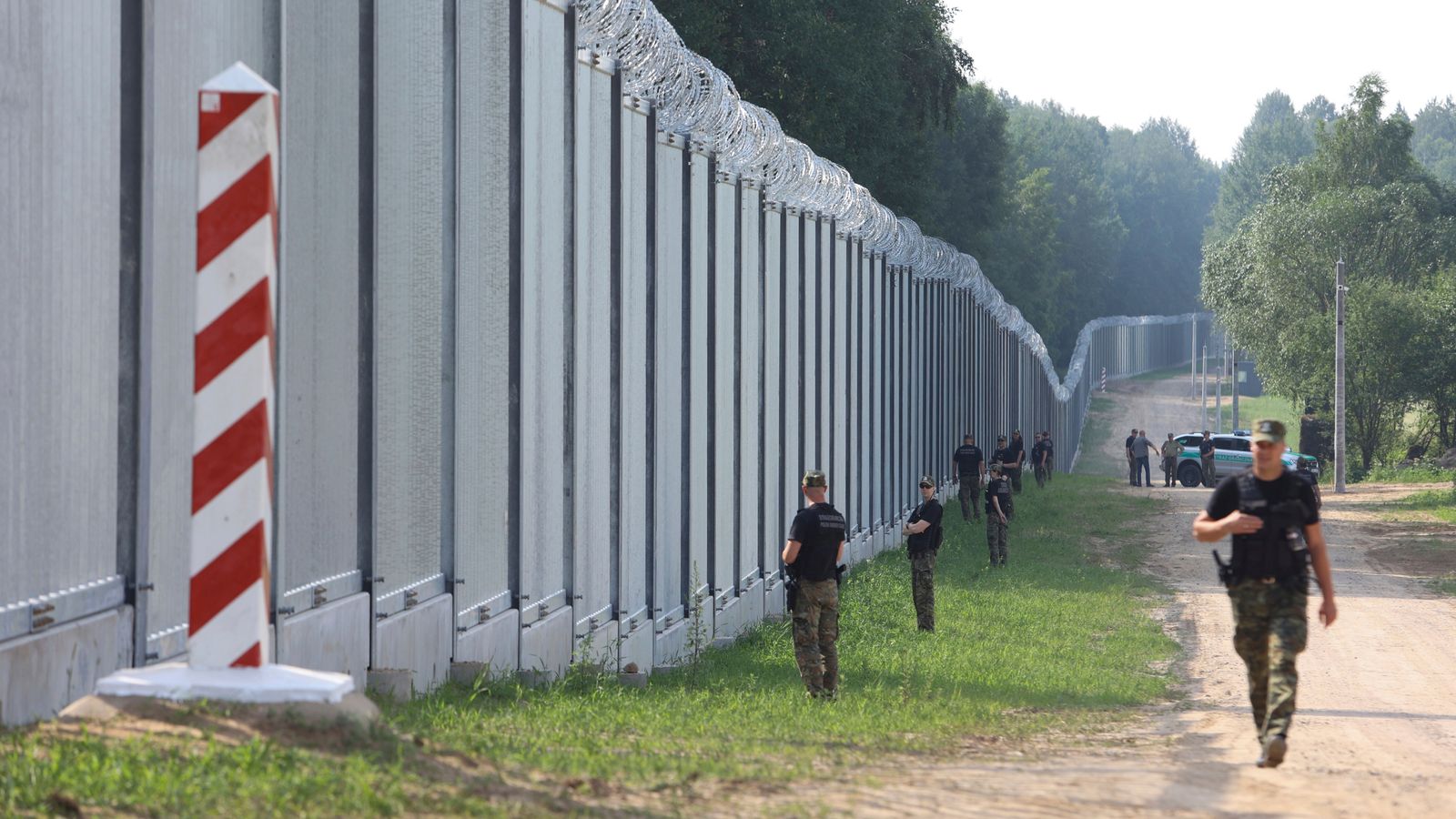A controversial steel wall on the border between Belarus and Poland has been completed.
The wall is 5.5m (18ft) high and is designed to stop asylum seekers fleeing conflict and poverty in the Middle East and Africa.
Human rights campaigners have accused Poland‘s government of double standards given how the country has welcomed millions of mostly white, Christian refugees from Ukraine.
Natalia Gebert, the founder of a Polish organisation that helps refugees, said: “If you give a lift to a refugee at the Ukrainian border, you are a hero. If you do it at the Belarus border, you are a smuggler and could end up in jail for eight years.”
Eyewitness: Stark difference in Eastern Europe’s welcome to Ukrainian and Syrian refugees
Poland’s Prime Minister Mateusz Morawiecki claims the wall is crucial in deterring Russian aggression.
A state of emergency has prevented journalists and human rights workers from visiting the border, and estimates suggest at least 20 migrants have died in the area’s freezing forests and bogs.
Wimbledon: ATP and WTA strip tournament of ranking points for banning Russian and Belarusian players
Sophia Sapega: Belarus jails activist whose Ryanair jet was forced to land in ‘air piracy’ incident
Wimbledon bans Russian and Belarusian tennis players including Daniil Medvedev over Ukraine war
One refugee who made the crossing in the EU said sub-zero temperatures and violence were common in the vast swamps.
The man – known only as Ali – told the AP news agency: “There were nights when I went to sleep on the bare ground in the woods, thinking I would not wake up again.”
Ali, who fled Syria when his business was destroyed by Sunni extremists, says Polish guards pushed him back from the border six times – with Belarusian guards beating him, stealing his money and forcing him to take his clothes off in the middle of winter.
He also alleged he was forced to lie on the ground, screamed at, kicked repeatedly in the chest, and approached by a snarling dog.
Read more:
What caused the migrant crisis at the Belarus-Poland border?
‘Don’t come… it’s bad here’: Messages of regret from those seeking safety
Please use Chrome browser for a more accessible video player
The steel wall stretches along 115 miles (186km) of Poland’s border with Belarus, and electronic surveillance systems are yet to be installed.
According to Human Rights Watch, Poland “unlawfully, and sometimes violently, summarily pushes migrants and asylum seekers back to Belarus, where they face serious abuses, including beatings and rape by border guards and other security forces”.
Ali ended up spending 16 days in the forest, and three months in several Polish detention centres, where he was only referred to by his identification number.
He said he was forced to strip naked in public every time he was moved to a different camp by guards carrying batons and stun guns.
In March, he was told to go to Germany – and by April, he had arrived in Berlin.
Ali said: “I feel better here. People call me by my name again. But I’m worried all the time that the Germans will send me back to Poland.”
Entering the EU through Poland is regarded as less dangerous than crossing the Mediterranean Sea.
Belarus became an increasingly used migration route into the EU after President Alexander Lukashenko began encouraging would-be asylum seekers in the Middle East and Africa to come to Minsk.
EU leaders have accused Lukashenko of retaliating after the trading bloc introduced sanctions because of how his regime treats dissidents.








